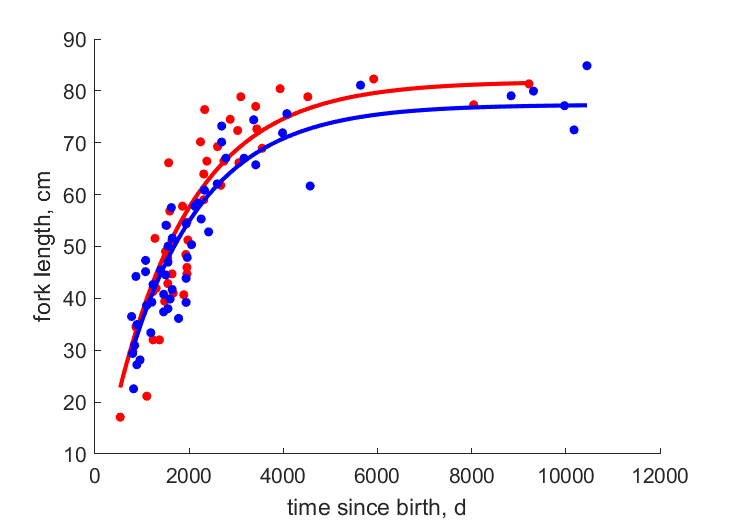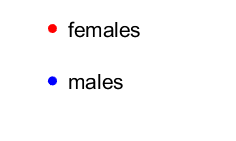Predictions & Data for this entry
| Model: abj | climate: MA | migrate: Mo | phylum: |
| COMPLETE = 2.5 | ecozone: MI, MPW | food: bjPz, jiCi | class: |
| MRE = 0.062 | habitat: 0jMp, jiMr | gender: D | order: |
| SMSE = 0.010 | embryo: Mp | reprod: O | family: |
Zero-variate data
| Data | Observed | Predicted | (RE) | Unit | Description | Reference |
|---|---|---|---|---|---|---|
| ab | 6 | 6.47 | (0.07839) | d | age at birth | guess |
| am | 4015 | 4002 | (0.003245) | d | life span | fishbase |
| Lp | 51.9 | 51.54 | (0.006841) | cm | fork length at puberty for females | fishbase |
| Li | 97 | 95.42 | (0.0163) | cm | ultimate fork length | fishbase |
| Wwb | 0.00032 | 0.0003219 | (0.005983) | g | wet weight at birth | PhilJaya2017 |
| Wwp | 1766 | 1772 | (0.003514) | g | ultimate wet weight | fishbase |
| Wwi | 1.124e+04 | 1.124e+04 | (0.0001285) | g | ultimate wet weight | fishbase |
| Ri | 2521 | 2528 | (0.003076) | #/d | max reprod rate | PhilJaya2017 |
Uni- and bivariate data
| Data | Figure | Independent variable | Dependent variable | (RE) | Reference |
|---|---|---|---|---|---|
| tL_f |   | time since birth | fork length | (0.1058) | CappMarr2013 |
| tL_m |   | time since birth | fork length | (0.09834) | CappMarr2013 |
Pseudo-data at Tref = 20°C
| Data | Generalised animal | Lutjanus johnii | Unit | Description |
|---|---|---|---|---|
| v | 0.02 | 0.01653 | cm/d | energy conductance |
| p_M | 18 | 6.634 | J/d.cm^3 | vol-spec som maint |
| k_J | 0.002 | 0.0003819 | 1/d | maturity maint rate coefficient |
| k | 0.3 | 0.3018 | - | maintenance ratio |
| kap | 0.8 | 0.9522 | - | allocation fraction to soma |
| kap_G | 0.8 | 0.798 | - | growth efficiency |
| kap_R | 0.95 | 0.95 | - | reproduction efficiency |
Discussion
- males are supposed to differ from females by {p_Am} only
Facts
- weight-length relationship: Ww in g = 0.01479*(TL in cm)^2.96 (Ref: fishbase)
Bibliography